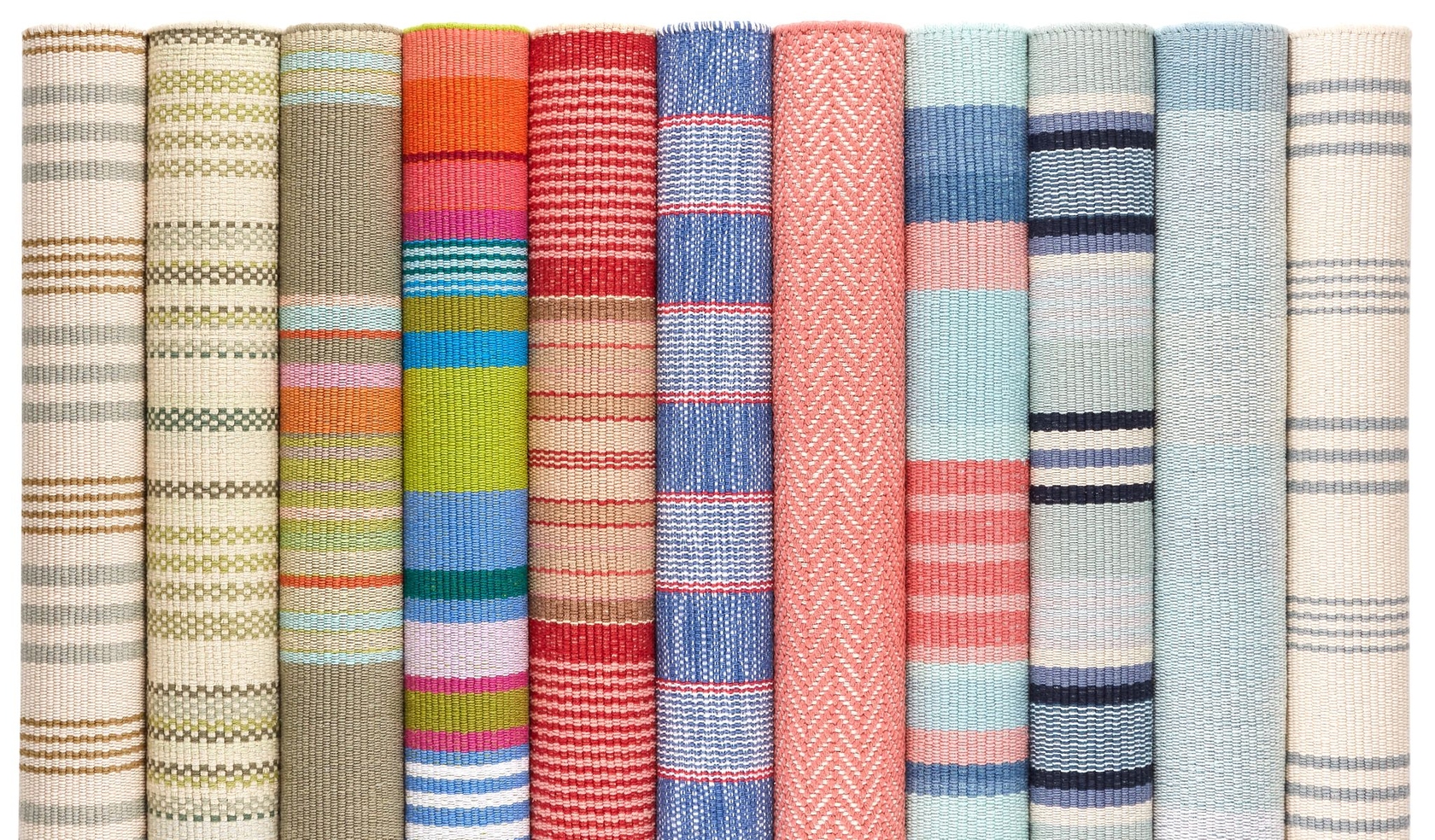Sign Up For Our Newsletter — Save Up to 15%
Sign Up©2024 Fresh American, LLC d/b/a The Annie Selke Companies, All Rights Reserved

• Cotton rugs are lightweight and easy to clean.
• The rugs are usually low profile and sometimes reversible.
• Cotton rugs offer a lot of look at a reasonable price.
• Great for kitchens, children’s rooms and casual spaces.
FEATURES & BENEFITS: Durable construction; soft underfoot; lightweight.
WHERE TO USE: High- and low-traffic spaces; well-used family areas like hallways, bedrooms, and stairs.
HOW IT'S MADE: Cotton yarns make up the warp and weft of these hand-woven, basic-loom-weave rugs. Stripes and pattern run the length or width of the rug.
CARE:
FEATURES & BENEFITS: Soft underfoot; lightweight.
WHERE TO USE: Great for low- to medium-traffic areas such as guest rooms, hallways, and home offices.
HOW IT'S MADE: Cotton yarns make up the warp and weft of these hand-woven rugs, which are made on a jacquard loom, with the weft skipping specific warps to create a reversible pattern.
CARE:
FEATURES & BENEFITS: Viscose-blend rugs offer the same lush feel underfoot as silk.
WHERE TO USE: The delicate fibers of viscose-blend rugs are best suited for low-traffic, gently used rooms only such as the office, master bedroom, or living room. Not suitable for homes with children and pets.
HOW IT'S MADE: A multi-step, intricate hands-on process, hand-loom knotted yarns are spun and dyed and hand-woven, then sheared by hand, giving a distressed look.
CARE:
FEATURES & BENEFITS: Durable construction; soft underfoot; lightweight.
WHERE TO USE: Low- to medium-traffic areas. We do not recommend using these rugs on stairs.
HOW IT'S MADE: Recycled denim from jeans/clothing are cut into thin scraps/rags. The denim scraps are then washed with bleach for a color variation. 100% cotton warp is set on the looms, and the rags are inserted by hand into the warp.
CARE:
FEATURES & BENEFITS: Eye-catching design with a unique mottled appearance; soft texture underfoot; it’s flat weave dhurrie construction creates an extremely low pile.
WHERE TO USE: Can be used in both low and high and high traffic areas. No suitable to be used on stairs.
HOW IT'S MADE: To create the pattern, the weaver uses a handloom and individually knots the weft yarns into the warp yarns.
CARE:
FEATURES & BENEFITS: Durable construction; reversible.
WHERE TO USE: High- and low-traffic spaces; well-used family areas like hallways, bedrooms, and living rooms.
HOW IT'S MADE: Instead of the traditional weaves, these rugs have a double warp which makes them denser and heavier. Each rug is finished with hand binding. Due to the way these are made, small weaving imperfections are controlled to a minimum but are unavoidable.
CARE:
Regular vacuuming and the occasional gentle shake will keep these rugs looking their best.
As woven rugs settle, a stray piece of yarn may pop up. This is perfectly normal. Do not cut the yarn; simply tuck and pull it back through the underside of the rug.
Small rugs may be hand washed gently in cold water; professional cleaning is recommended for larger area rugs.
Do not machine wash, bleach or tumble dry.
FEATURES & BENEFITS: Cushy, springy feel; high profile, with an eye-catching looped construction.
WHERE TO USE: Their cushy and comfortable feel underfoot makes these rugs perfect for both living rooms and bedrooms.
HOW IT'S MADE: Woven from recycled jersey fabric with large hooks. Cotton canvas back, attached with latex.
CARE:
FEATURES & BENEFITS: Plush feel; durable construction.
WHERE TO USE: This rug is an ideal backdrop for your master bedroom, family room, or dining room.
HOW IT'S MADE: Cotton and wool are first knotted and then sheared by hand, which creates a plush feel, unique mottled appearance, and excellent durability.
CARE:
FEATURES & BENEFITS: Soft and plush.
WHERE TO USE: Low- to medium-traffic areas, such as guest rooms, hallways, and home offices.
HOW IT'S MADE: A combination of cotton and cotton chenille gives these woven rugs their plush look and feel. The dye is hand pressed onto piles of yarn in a striped pattern, and the dyed yarn is then spun onto cones for weaving, where it makes up the warp of these basic-loom- weave rugs. The dyed portions of the yarn are staggered on the warp to create the pattern.
CARE: